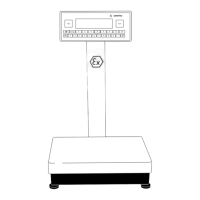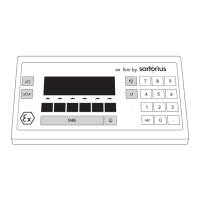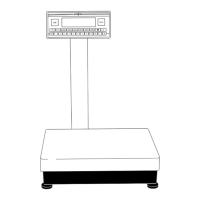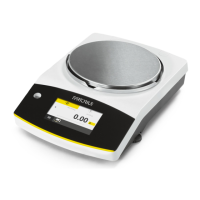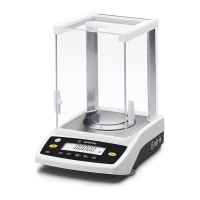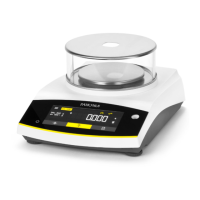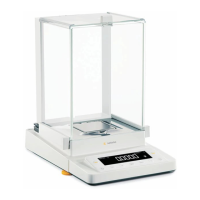26
For service technicians only:
External Calibration for Scales
Verified for Legal Metrology
in the EU*
– External calibration is blocked
when the scale is used in legal
metrology
> External calibration is possible
only after you have removed
the verification control seal, in
which case the validity of the
verification becomes void and the
scale must be re-verified
– External calibration can now
be performed
Factory Settings
Calibration/adjustment mode:
Internal calibration/adjustment
(1 9 4)
Calibration/adjustment sequence:
Calibration; adjustment, if necessary
(isoCAL function): (1 10 2)
Automatic initiation of calibration/
adjustment (isoCAL function):
Off (1 15 1)
ISO/GMP printout: off (8 10 1)
Available Features
Your scale can be calibrated
externally (menu item 1 9 1 or1 9 3)
or internally (1 9 4).
External calibration can
be performed
– with the pre-set weight value
(1 9 1), or
– with a user-defined weight value
(1 9 3)
Adjustment can be performed
– automatically following calibration
(1 10 1); or
– if desired, the adjustment
operation can be started man-
ually after calibration (1 10 2)
You can also configure whether
the calibration mode
– will be activated according
to the specific setting (by setting
1 9 1, 1 9 3 or 1 9 4), or
– can be selected by the user after
pressing the [ISOTEST]/[TEST]
key (1 9 12).
You can have the scale automatically
display an adjustment prompt after
a certain time interval has elapsed
since the last calibration/adjustment
or when the ambient temperature
changes by a defined amount.
You can also configure the scale
to perform calibration and
adjustment automatically (isoCAL)
when the pre-set time and/or
temperature limit is reached
(1 15 3 and 1 15 5).
You can have the calibration/
adjustment results documented in
an ISO/GMP-compliant printout.
> For the maximum values required
to start calibration/adjustment
when you use a preload or a
conveyor system, refer to the
section “Overview –
Specifications”.
Calibration/Adjustment
“isoTEST”
Purpose
Calibration is the determination
of the difference between the
weight readout and the true weight
(mass) of a sample. Calibration
does not entail making any changes
within the scale.
Adjustment is the correction of this
difference between the measured
value displayed and the true
weight (mass) of the sample, or the
reduction the difference to an
allowable level within the maximum
permissible error limits.
Using Verified Scales as Legal
Measuring Instruments in the EU*:
Before using your scale as
a legal measuring instrument, you
must perform “internal calibration”
at the place of installation after
the warmup period.
* including the Signatories of the
Agreement on the European
Economic Area
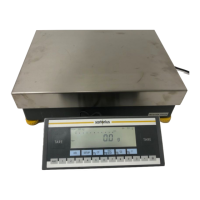
